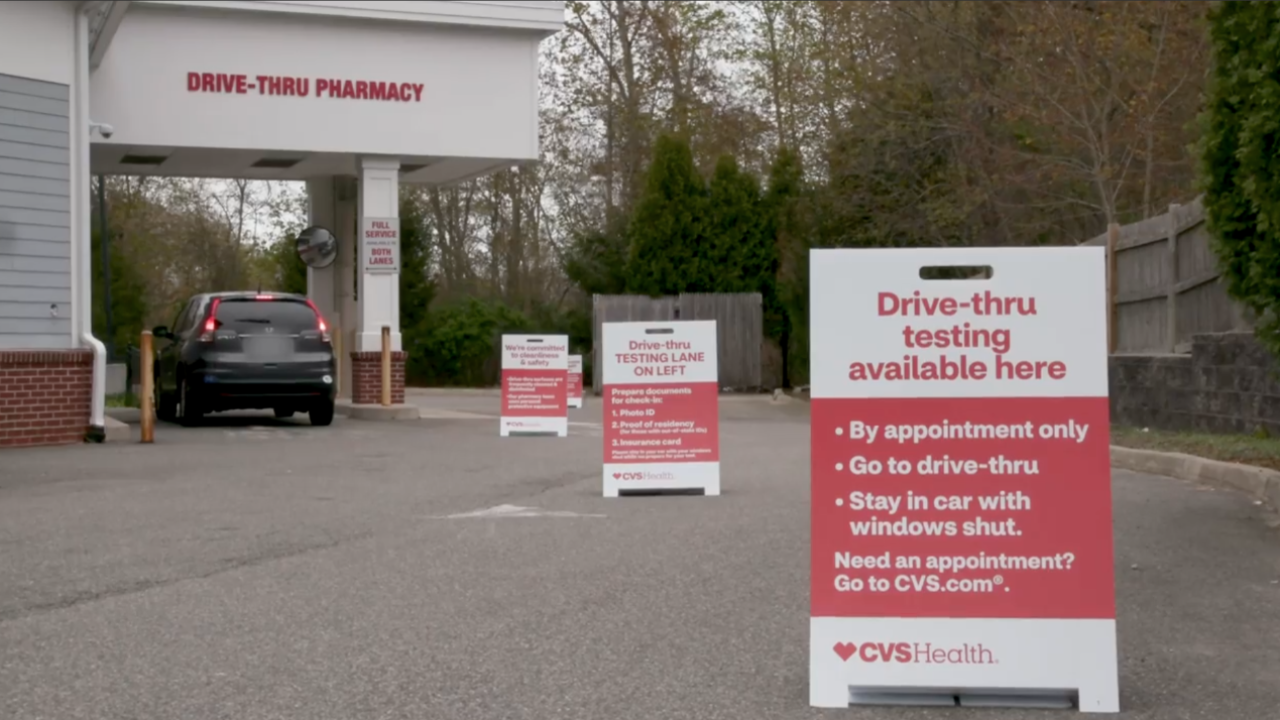CUYAHOGA FALLS, Ohio — When Mike Michelsen of Cuyahoga Falls tested positive for COVID-19 on Monday afternoon, he quickly started looking for a test for his wife.
“I had difficulty in locating a place locally to get a test for her,” Michelsen said.
Michelsen, who is 76 years old, was diagnosed with bladder cancer in April of this year. The semi-retired pharmacist still works part-time at CVS, where he said in recent weeks staff have been delivering and administering COVID-19 booster shots and flu shots.
Michelsen is fully vaccinated, having received two doses of the Moderna vaccine, and is eligible to get his booster shot soon, too. He said he’s encouraged by the number of first-dose or second-dose shots of the vaccine he’s administered to patients recently.
In the process of trying to find a test for his wife, Michelsen called pharmacies and checked for openings, but there weren’t any. He also called his primary care doctor and even the hospital where he got tested, but he said he never received calls back.
“It’s been very frustrating. I did finally find a local Walgreens that had one opening,” Michelsen said. “She actually had her test [Friday], and fortunately for her and for me, she tested negative.”
For Michelsen, the combination of COVID-19 symptoms and exhaustion from chemotherapy treatments made the difficult process of finding a test even tougher.
“I feel pretty exhausted,” Michelsen said. “It’s one thing to be sitting and feeling tired. It's another thing to walk across the room and feel like you've walked or ran a marathon.”
Michelsen said the health care system that makes it difficult to find tests outside of hospitals needs to change, and some patients need to be prioritized. He believes it’s a matter of better communication among doctors and medical staff to make that happen.
“Certainly people that are in high-risk situations should somehow get moved towards the front of the line,” Michelsen said. “I'm not promoting that some people are more important than others. I'm not promoting that at all, but a person that needs a test for whatever the reason is, there should be a way.”
Making testing more routine
Dr. Claudia Hoyen is the director of infection control at Rainbow Babies and Children’s Hospital and the University Hospitals Health System. She described the availability of testing in the past 19 months as “either feast or famine,” in part due to supply chain shortages.
“Those things have settled down a bit, but we still are always a little bit on edge as to when our next shipment is coming,” Hoyen said.
Hohen also noted that, with many health care workers leaving the industry and with a surge in COVID-19 cases, there are fewer people available to man freestanding testing stations.
“In the early part of the pandemic when everything was closed down and there weren't surgeries, we had lots of people who weren't doing anything, and so we were able to deploy them to testing stations and centers, Hoyen said.
Now, though, “those kind of extra hands are being put to use in in hospitals. You know, helping the nurses take care of patients,” Hoyen said.
Hoyen said UH was working to make testing more routine. Pediatric practices within the UH system have been testing for COVID-19 for more than a year, and adult practices have been rolling out more testing the last couple of months.
She urged people in need of a test to call their primary care physicians. In total, she estimated that 50 to 100 tests were being given out at primary care offices at UH each day for the last six weeks.
“It's kind of shifted from that, you know, ‘Am I going to go to CVS, am I going to go somewhere else [a freestanding center], to now where it's becoming very routine and we're starting to do it within available practices,” Hoyen said.
She noted that testing is an important part of stopping the spread of COVID-19.
“Early COVID can look like a lot of different things, but those other things, you don't need to quarantine necessarily for 10 days,” Hoyen said. “It is really important that people know if you have a runny nose, a cough, vomiting, diarrhea or whatever the symptoms are you're having, as we're in this surge and we know there's a lot of COVID around, to be sure that we're still doing what we need to to make sure that we're not spreading it to others around us.”
View a map of COVID-19 testing locations here.
Additional Coronavirus information and resources:
Download the News 5 app for free to easily access local coronavirus coverage, and to receive timely and limited news alerts on major COVID-19 developments. Download now on your Apple device here, and your Android device here.
See complete coverage on our Coronavirus Continuing Coverage page.
Vaccinating Ohio - Find the latest news on the COVID-19 vaccines, Ohio's phased vaccination process, a map of vaccination clinics around the state, and links to sign up for a vaccination appointment through Ohio's online portal.
See data visualizations showing the impact of coronavirus in Ohio, including county-by-county maps, charts showing the spread of the disease, and more.
Rebound Northeast Ohio News 5's initiative to help people through the financial impact of the coronavirus by offering one place to go for information on everything available to help and how to access it. We're providing resources on:
Getting Back to Work - Learn about the latest job openings, how to file for benefits and succeed in the job market.
Making Ends Meet - Find help on topics from rent to food to new belt-tightening techniques.
Managing the Stress - Feeling isolated or frustrated? Learn ways to connect with people virtually, get counseling or manage your stress.
Doing What's Right - Keep track of the way people are spending your tax dollars and treating your community.
We're Open! Northeast Ohio is place created by News 5 to open us up to new ways of thinking, new ways of gathering and new ways of supporting each other.
Visit Ohio's Coronavirus website for the latest updates from the Ohio Department of Health.
View a global coronavirus tracker with data from Johns Hopkins University.




